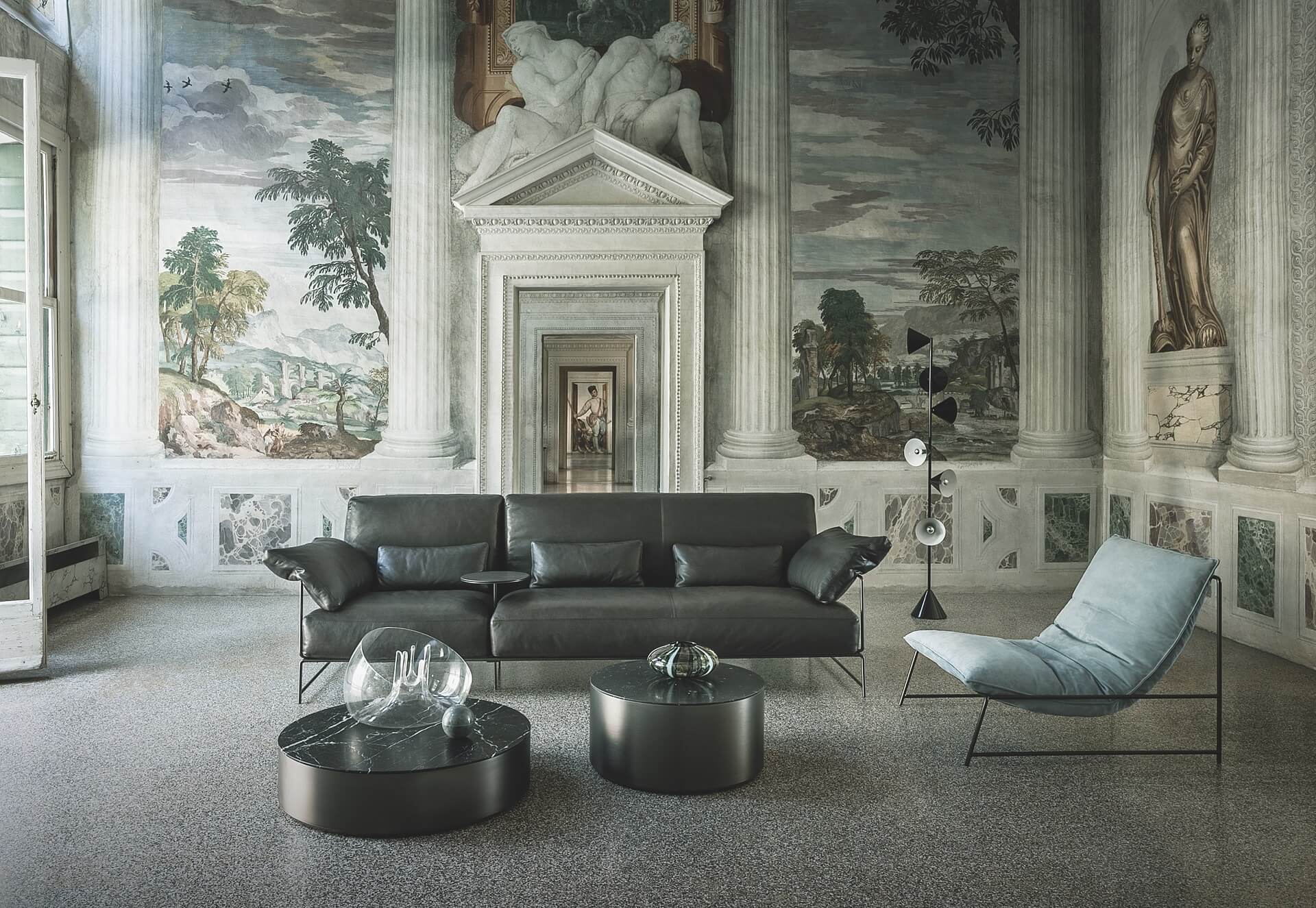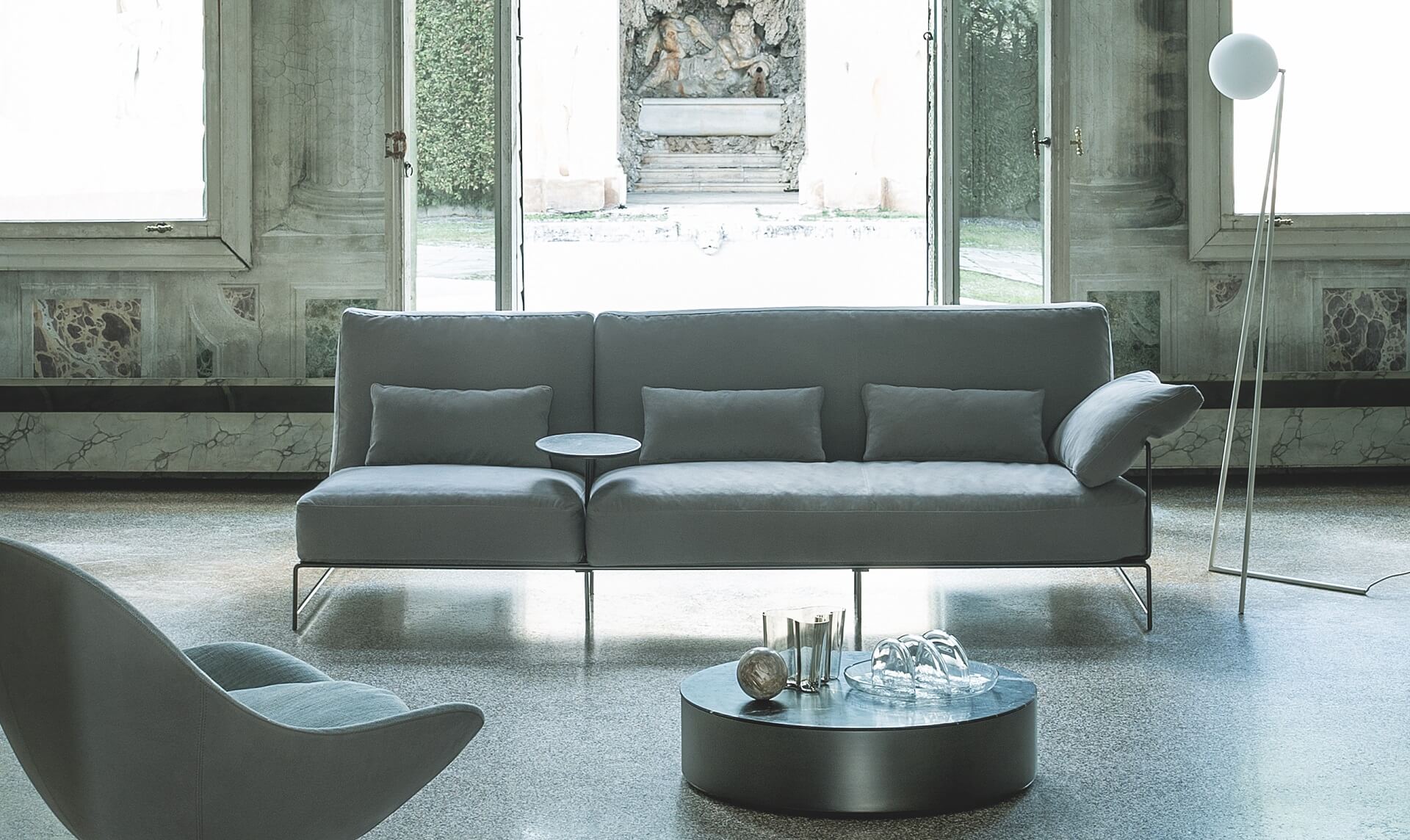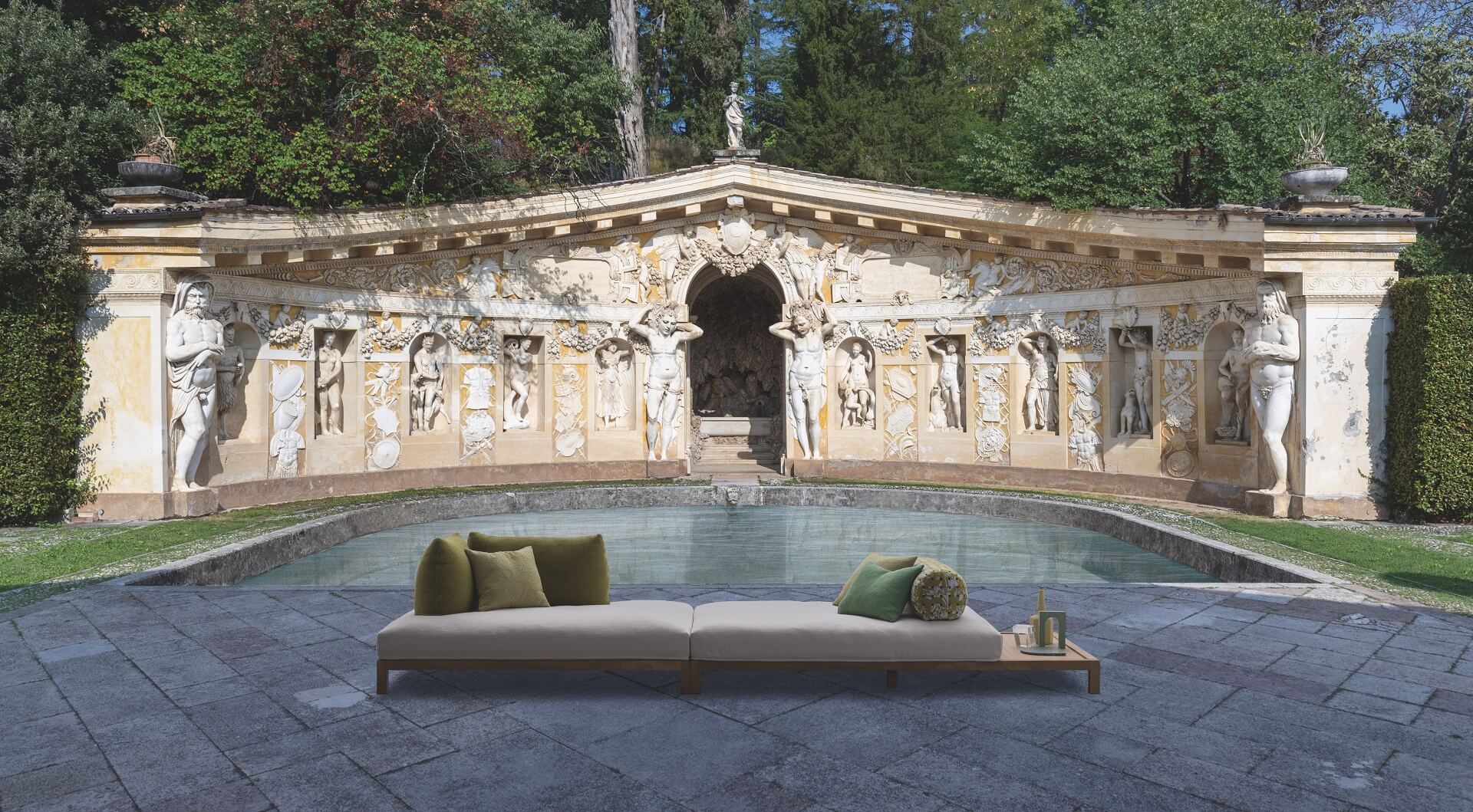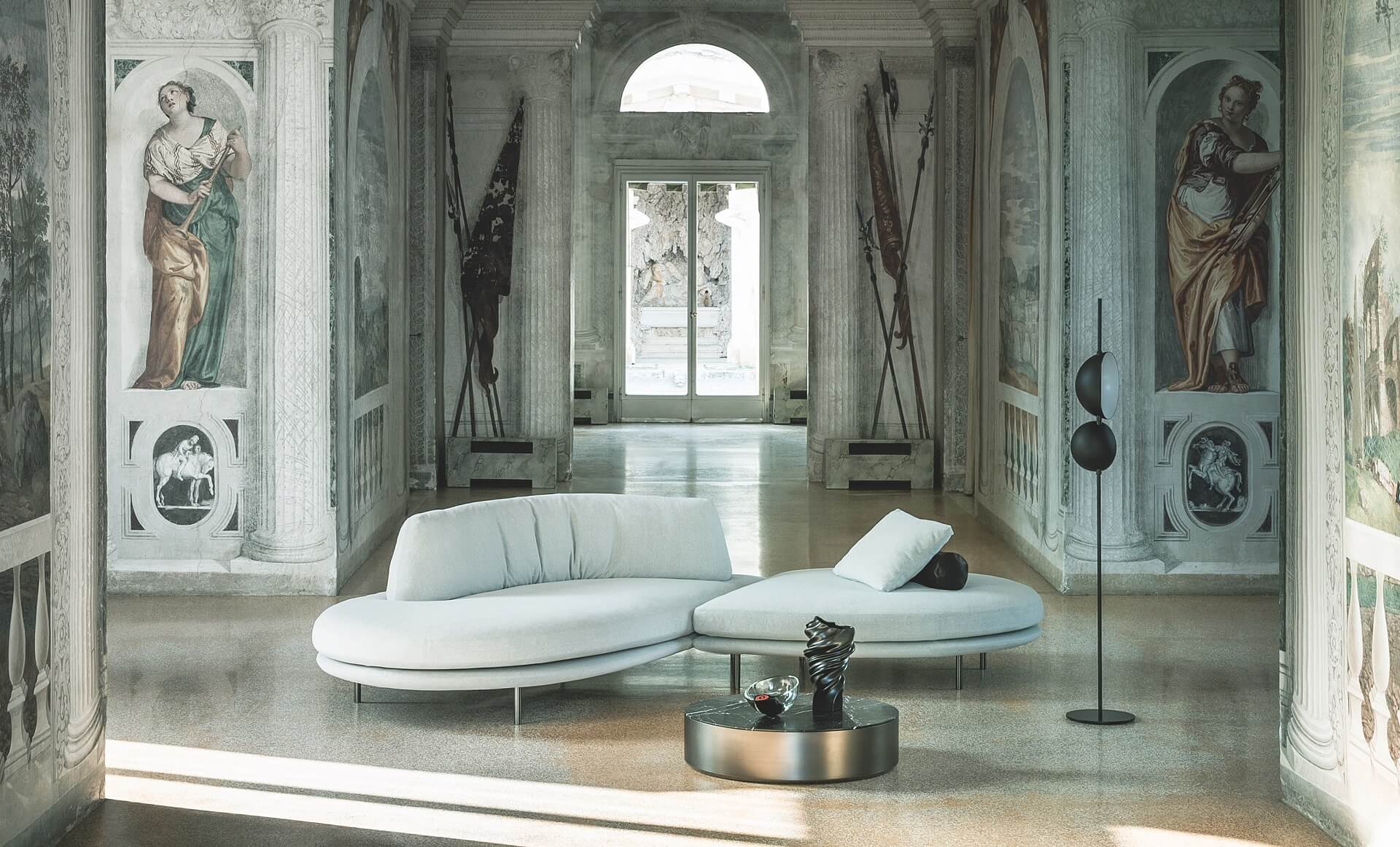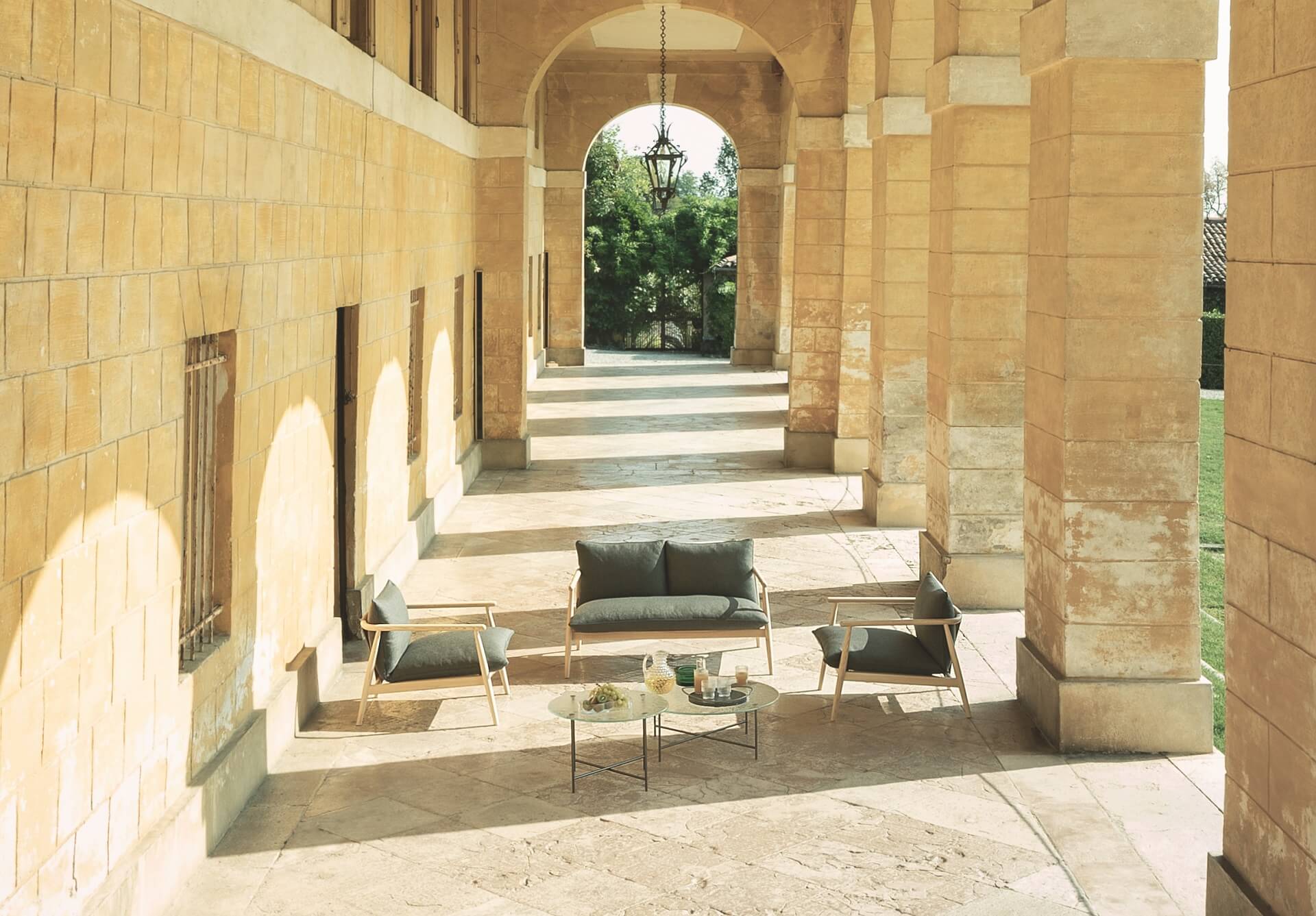With its aptitude for interpreting different worlds and conveying strong emotions, Désirée has become accustomed to the beauty and elegance of things and places.This is why the new furniture in the collection was photographed at Villa Barbaro, also known as Villa di Maser, a masterpiece of Palladio.
The Désirée collection, with pieces designed by Matteo Thun and Antonio Rodriguez, Marc Sadler, Jaj Jalan, Setsu and Shinobu Ito, is made with great attention to the quality of materials and demonstrates, in this context, that design can also dialogue with the history, art and architecture of the Renaissance.
Villa di Maser is located in the province of Treviso, in the Colli Asolani, and became a UNESCO World Heritage Site in 1996. A unique place in the world where the works of two other extraordinary Renaissance artists, Paolo Veronese and Alessandro Vittoria, painter and sculptor respectively, coexist.
The Villa is a synthesis of the artistic and cultural values of the Veneto region and a tribute to the love of art and architecture that has always distinguished Désirée and Gruppo Euromobil.
Rito: Elements in Context
The ethereal contemporaneity of the Rito collection here lives the spirit of time. A pure and rarefied time that seems to have stopped. Lightness, simplicity and clean lines. Three design elements that make it perfectly contextualized even in the most classic environments such as Villa di Maser.
Rito, designed by Matteo Thun and Antonio Rodriguez for Désirée, consists of an armchair, sofa and writing desk. The armchair and sofa are characterized by great formal lightness and maximum comfort. Made with an agile metal rod frame with clean lines that accommodates the generous, soft cushions, they are fully removable and available in leather or fabric in a wide range of colors. A minimalist structure and a generous cushion are the distinguishing features of the Rito armchair, synonymous with sophisticated simplicity.
Karin: Oriental Spirit
The relationship between architecture and nature, one of the cornerstones of Andrea Palladio’s thought, is also the theme of Désirée’s collections, designs made with natural elements and essential forms that encourage dialogue with the beauty of places.
The oriental flavor of the Karin collection, designed by Setsu and Shinobu Ito for Désirée, is present in the sign of the sofa and armchair. A mood that is very much in tune with Andrea Palladio’s architecture and reflects the cosmopolitan spirit of Venice at the time, the most oriental of Western cities, and the surrounding area during the Renaissance period.
For a weather-protected location, such as a porch, the Karin sofa and armchair are offered with the exclusive Vibrazioni fabric collection by Rubelli – a historic Venetian company founded in 1858 – made of technical fibers that are resistant to color variations given by sunlight. Vibrazioni is made with important and compact weaves reminiscent of handcrafted weaves, irregular tweeds that play on refined contrasts and harmonies, geometries and decomposed patterns that create a contemporary jacquard.
The Karin armchair is distinguished by proportions designed to achieve a deep, ergonomic seat. The low backrest is made from a single piece of curved natural ash that also becomes an armrest, giving the armchair grace and harmony.
The lines of the Karin sofa are clean but not geometric, the soft workmanship of the ash wood, either natural or coffee-stained, and the backrest made with a special braided natural leather cord makes this design extremely elegant and refined.
Nemu: Craftsmanship
Born from the hand of Setsu and Shinobu Ito, Nemu by Désirée is not just a coffee table; it is a living object. The textured glass top with its irregular underlying surface, obtained by fusion, creates a “hand-molded” effect, typical of craftsmanship, made in the furnaces of Murano.
Haneda: Deconstructed Design
Designed by Marc Sadler, Haneda is a deconstructed seating system inspired by tatami. Its peculiarity is its total flexibility thanks to the infinite compositional combinations that can be obtained by arranging the seats supported by wooden bases or mattresses resting on soft mats. The outdoor version enhances this feature making the collection ideal for furnishing terraces and covered verandas.
Elies: Harmony of Hues
Paolo Caliari, famous as the Veronese, is one of the foundations of sixteenth-century Venetian painting and art. From the great Venetian tradition he is distinguished by the peculiar harmony of his limpid, brilliant, joyful hues and the transparency of his atmospheres. Veronese fuses painting with architectural illusion, such that colors, volumes, lines and themes intertwine to give a theatrical effect.
Veronese established himself above all as an exceptional colorist for his intense and sharp use of color, at a time when tone-on-tone shading was favored
The soft forms of the Elies sofa, designed by Jai Jalan for Désirée, lend themselves well to upholstery with a strong chromatic personality, proposed in neutral hues such as white, gray and blue for a respectful dialogue with the frescoes.
The complement does not betray the distinctive mark of the Canadian designer characterized by sinuous shapes, curved and enveloping lines that convey simplicity and elegance. The white bouclè fabric upholstery gives the sofa a timeless personality that seems to dialogue perfectly with Palladian architecture and Veronese’s pictorial work.
Elies in the two-piece composition is upholstered in a pearl-gray technological stretch fabric capable of enveloping any shape with marked sinuosity. A compact velvet that softens lines and enhances shapes and volume. Thanks to its high performance it is particularly resistant and also suitable for outdoor product coverings.
Great attention is paid to attention to detail. The rotating coffee table is an optional extra and is made with a satin-burnished metal frame and a matte black Marquina marble top. In addition to the object’s intrinsic function, it lends elegance to the composition.
The seat raised from the floor, presented in various forms, is the product of studying a variety of compositional combinations. In addition to the end modules with round and sinuous shapes, squarer and more linear modules were also designed that completely change the appearance of the sofa.
The backrest, made of feather with a polyurethane insert, given its malleability can take different shapes. The upholstery, a soft high pile velvet, combines the naturalness of cotton with the brightness of viscose and creates a marbled effect, enhancing its three-dimensionality. Elies is totally removable and offered in leather or fabric in many color variations.
